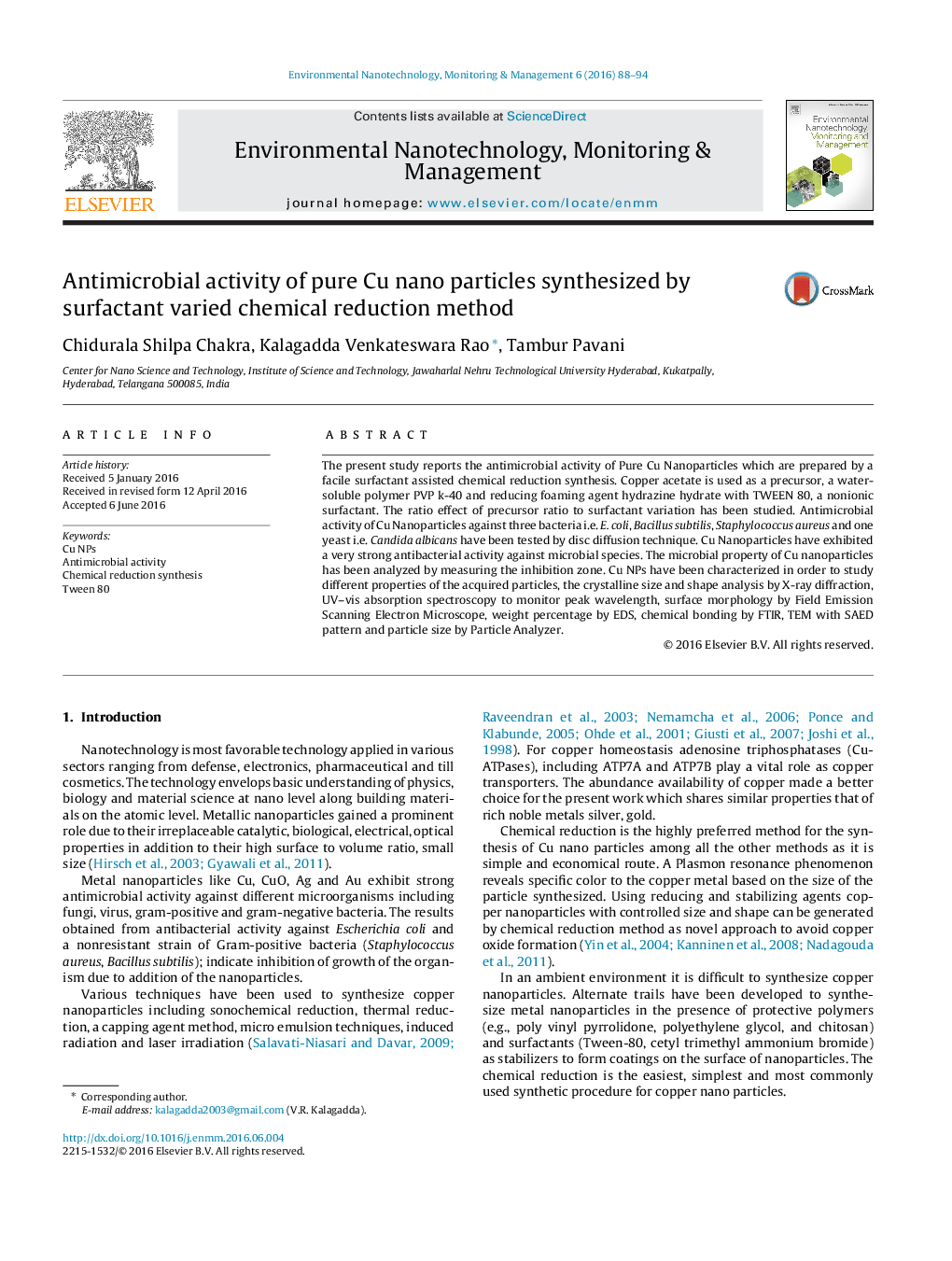| Article ID | Journal | Published Year | Pages | File Type |
|---|---|---|---|---|
| 4424189 | Environmental Nanotechnology, Monitoring & Management | 2016 | 7 Pages |
•Synthesis process of copper nanoparticles is cheap and cost effective.•The process doesn’t require vacuum or controlled atmosphere.•Throughput is significantly high.•The performances of copper nanoparticles for the bacteria considered are very high when compared to other nanoparticles.•From the zone of inhibition against microbes increases as the concentration of Copper nanoparticles increased in the test organism.
The present study reports the antimicrobial activity of Pure Cu Nanoparticles which are prepared by a facile surfactant assisted chemical reduction synthesis. Copper acetate is used as a precursor, a water-soluble polymer PVP k-40 and reducing foaming agent hydrazine hydrate with TWEEN 80, a nonionic surfactant. The ratio effect of precursor ratio to surfactant variation has been studied. Antimicrobial activity of Cu Nanoparticles against three bacteria i.e. E. coli, Bacillus subtilis, Staphylococcus aureus and one yeast i.e. Candida albicans have been tested by disc diffusion technique. Cu Nanoparticles have exhibited a very strong antibacterial activity against microbial species. The microbial property of Cu nanoparticles has been analyzed by measuring the inhibition zone. Cu NPs have been characterized in order to study different properties of the acquired particles, the crystalline size and shape analysis by X-ray diffraction, UV–vis absorption spectroscopy to monitor peak wavelength, surface morphology by Field Emission Scanning Electron Microscope, weight percentage by EDS, chemical bonding by FTIR, TEM with SAED pattern and particle size by Particle Analyzer.
Graphical abstractFigure optionsDownload full-size imageDownload as PowerPoint slide
